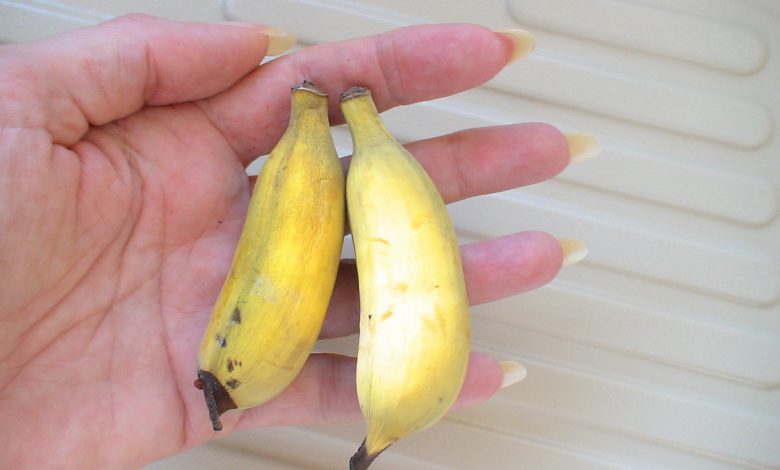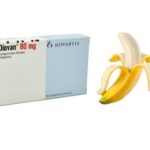Is it Safe to Take Ramipril and Bananas Together?

For most people, taking a new medication may mean switching up your lifestyle a bit and that includes the foods you eat. A food-drug interaction means that a specific nutrient or compound within the food changes the way your body metabolizes the medication, and this can either enhance or reduce the dose your body gets, according to Johns Hopkins Medicine. The potential results: an increased risk of side effects, many of which can be dangerous, or the drug not working as it was intended.
Before introducing a medication, ask your pharmacist about any food interactions, including with alcohol, and any adjustments you may have to make to your diet. In this article, we will discuss ramipril and banana, and other foods to avoid while taking them.
What is ramipril?
Ramipril is a prescription drug that’s available as the brand-name drug Altace. It’s also available as a generic drug. Generic drugs usually cost less. In some cases, they may not be available in every strength or form as the brand.
Ramipril is used to:
• treat high blood pressure
• reduce the risk of heart attack, stroke, or death in people with a high risk
• treat heart failure in people who have had a heart attack
Ramipril may be taken as part of a combination therapy with other medications used to treat high blood pressure, such as thiazide diuretics.
How it works
Ramipril belongs to a class of drugs called angiotensin-converting enzyme (ACE) inhibitors. A class of drugs is a group of medications that work in a similar way. They are often used to treat similar conditions.
Ramipril works by relaxing the blood vessels in your body. This reduces stress on your heart and lowers your blood pressure.
How should ramipril be used?
Ramipril comes as a capsule to take by mouth. It is usually taken once or twice a day with or without food. To help you remember to take ramipril, take it around the same time(s) every day. Follow the directions on your prescription label carefully, and ask your doctor or pharmacist to explain any part you do not understand. Take ramipril exactly as directed. Do not take more or less of it or take it more often than prescribed by your doctor.
Typical dosing for Altace (ramipril)
• High blood pressure: The typical dose is 2.5 mg to 20 mg by mouth total per day. Smaller doses are usually taken once a day, but larger doses can be split into 2 divided doses and taken twice a day.
• Heart failure after a heart attack: The typical dose is usually 5 mg by mouth twice daily.
Swallow the capsule whole, or open the capsule and sprinkle the contents on a small amount of applesauce (about 4 oz.) or in 4 oz. (about 120 mL) of water or apple juice. Eat or drink the entire mixture. This mixture can be prepared in advance and stored for 24 hours at room temperature or 48 hours in the refrigerator.
Your doctor will probably start you on a low dose of ramipril and gradually increase your dose.
Ramipril controls high blood pressure and heart failure but does not cure them. Continue to take ramipril even if you feel well. Do not stop taking ramipril without talking to your doctor.
What are bananas?
Bananas are most commonly known for being a good source of potassium, but as per the U.S. Department of Agriculture’s MyPlate guidelines, their nutritional worth doesn’t end there. In fact, this fruit is packed with a plethora of vitamins and minerals that are essential to your health, making them one of the world’s most appealing superfoods.
According to U.S. Department of Agriculture (USDA) calculations, which are based on a 2,000-calorie diet, a medium-sized banana contains only 105 calories. Although it seems obvious that these fruits are a relatively healthy snack, they get a bad reputation because of the large amounts of carbohydrates they have: 27 grams (g) for a medium-sized banana.
Bananas are a great food to eat when you’re sick. They’re soft and bland but rich in nutrients and fast-acting carbs. The potassium in bananas can help replenish your electrolyte stores as well since potassium is one of the key electrolytes your body needs.
Ramipril and Banana
Angiotensin-converting enzyme (ACE) inhibitors, like ramipril, cause the body to retain more potassium than usual. This could raise your blood levels of potassium too high, a condition called hyperkalemia, which can be dangerous. Potassium levels in cells are very high, and they are kept that way actively by ion pumps in the cell membranes, which push sodium out and potassium in. Taking potassium-rich foods like bananas, meat, milk, and sweet potatoes while taking ramipril can result in high blood potassium levels. Dangerously high potassium levels affect the heart and cause a sudden onset of life-threatening problems. Hyperkalemia symptoms include Abdominal (belly) pain and diarrhea.
However, An ACE inhibitor like ramipril is a good choice for people with diabetes. Unlike some medicines, they do not affect blood sugar levels.





